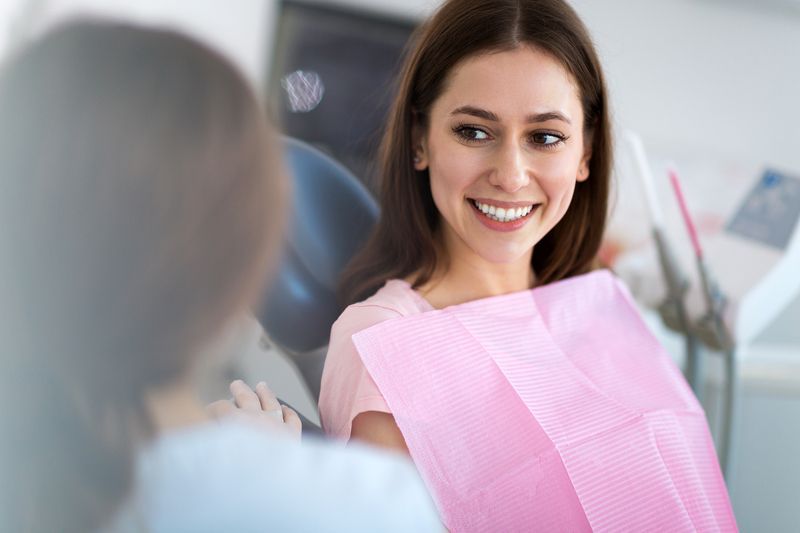Revolutionizing Smiles: The New Era of Dental Restoration Materials

The field of dentistry continuously evolves, particularly in the development of dental restoration materials. Recent advancements aim to enhance not only the aesthetic appeal of dental restorations but also their functionality and durability. Among these innovations, bioactive glass composites stand out for their ability to support natural tooth repair processes. We will explore the transformative impact of such materials on dental care, emphasizing their benefits in terms of longevity, aesthetic appeal, and overall patient satisfaction.
The Rise of Bioactive Materials in Dentistry
Bioactive materials have garnered significant attention in dental research due to their ability to facilitate the natural repair mechanisms of tooth structures. Unlike traditional inert materials, bioactive glass composites interact positively with biological tissues. They release ions such as calcium and phosphate, which are crucial for remineralizing teeth and promoting the natural healing of tooth structures affected by decay or injury.
Advantages of Bioactive Glass Composites
Enhanced Durability and Longevity
Bioactive glass composites offer remarkable durability, resisting wear and tear better than many traditional materials. Their ability to integrate with tooth tissues and promote remineralization contributes to their longevity, reducing the need for frequent replacements or adjustments.
Aesthetic Benefits
In addition to functional advantages, the new era of dental materials includes a focus on aesthetic outcomes. Bioactive composites are designed to mimic the natural translucency and color of tooth enamel, which makes them virtually indistinguishable from natural teeth. This is a significant improvement over older materials that could look opaque or fail to match the surrounding teeth accurately.
Promoting Tooth Health
By releasing essential minerals, bioactive materials not only restore the function and appearance of teeth but also contribute to the overall health of the dental structure. This proactive approach to dental care helps prevent further decay and supports the longevity of both the restoration and the natural tooth.
Comparing Bioactive Materials with Traditional Options
While traditional materials like amalgam and conventional composites have been used for decades, they lack the ability to support the biological processes of tooth repair. Amalgam, for example, is durable but not bioactive, and its aesthetic qualities are markedly inferior to those of bioactive glass composites. Traditional composites may offer better aesthetics but typically do not support tooth mineralization.
Environmental and Health Considerations
Recent trends in dental restoration also consider environmental impact and patient health. Bioactive glass composites are advantageous because they are made from elements that are both safe and abundant in nature. Unlike amalgam, which contains mercury, bioactive materials pose no known environmental or health risks.
The Impact of Advanced Dental Materials on Patient Care
The introduction of advanced dental materials shapes the way dental care is delivered. Dentists can now offer treatments that are not only more effective but also more appealing to patients.
Higher Patient Satisfaction
Patients express higher satisfaction with restorations that look and feel natural and require less frequent repair or replacement. The comfort and confidence that come with these new materials can significantly improve a patient’s quality of life.
Cost Efficiency
Although the initial cost of bioactive glass composites may be higher than some traditional materials, their durability and the reduced need for future dental work can make them more cost-effective in the long term. Patients benefit from fewer dental visits and lower cumulative healthcare costs.
Streamlining Dental Procedures
The ease of application and the reduced need for replacements also mean that dental procedures involving bioactive materials can be more streamlined and less invasive. This efficiency is beneficial for both dental practitioners and patients, resulting in quicker, less complicated dental visits.
The development and implementation of bioactive glass composites and other advanced materials mark a new era in dental restoration. These materials are set to revolutionize dental practices by offering solutions that are not only functional and aesthetically pleasing but also conducive to the natural health of dental tissues. As these technologies continue to evolve, the potential for improving dental care and patient experiences becomes virtually limitless. With these advancements, the future of dentistry looks both bright and promising, ensuring that smiles not only look better but are fundamentally healthier.
We're committed to providing you with restorations that don't just look fantastic but promote healthier teeth. Ready to elevate your dental health with the latest in aesthetic and functional dental solutions? Contact us today to learn more about how we can transform your smile.


Connect With Us on Facebook
Areas We Serve
Downtown Salt Lake City
84103, 84116, 84104, 84101, 84111, 84102, 84112, 84113, 84108, 84105, 84115, 84104, 84103
Business Hours
- Monday
- -
- Tuesday
- -
- Wednesday
- -
- Thursday
- -
- Friday
- -
- Saturday
- Closed
- Sunday
- Closed
All Rights Reserved | South Temple Dental
Dentist in Downtown Salt Lake City, Utah
